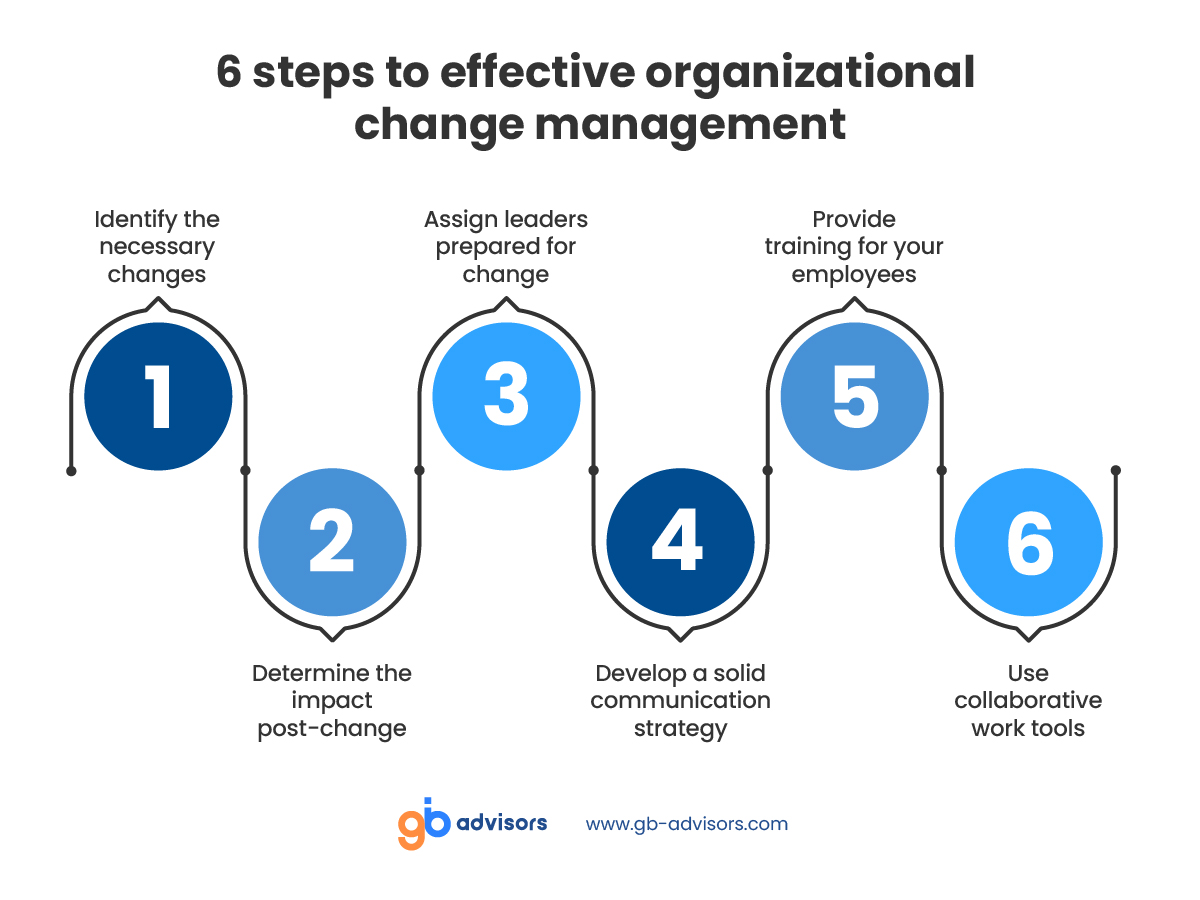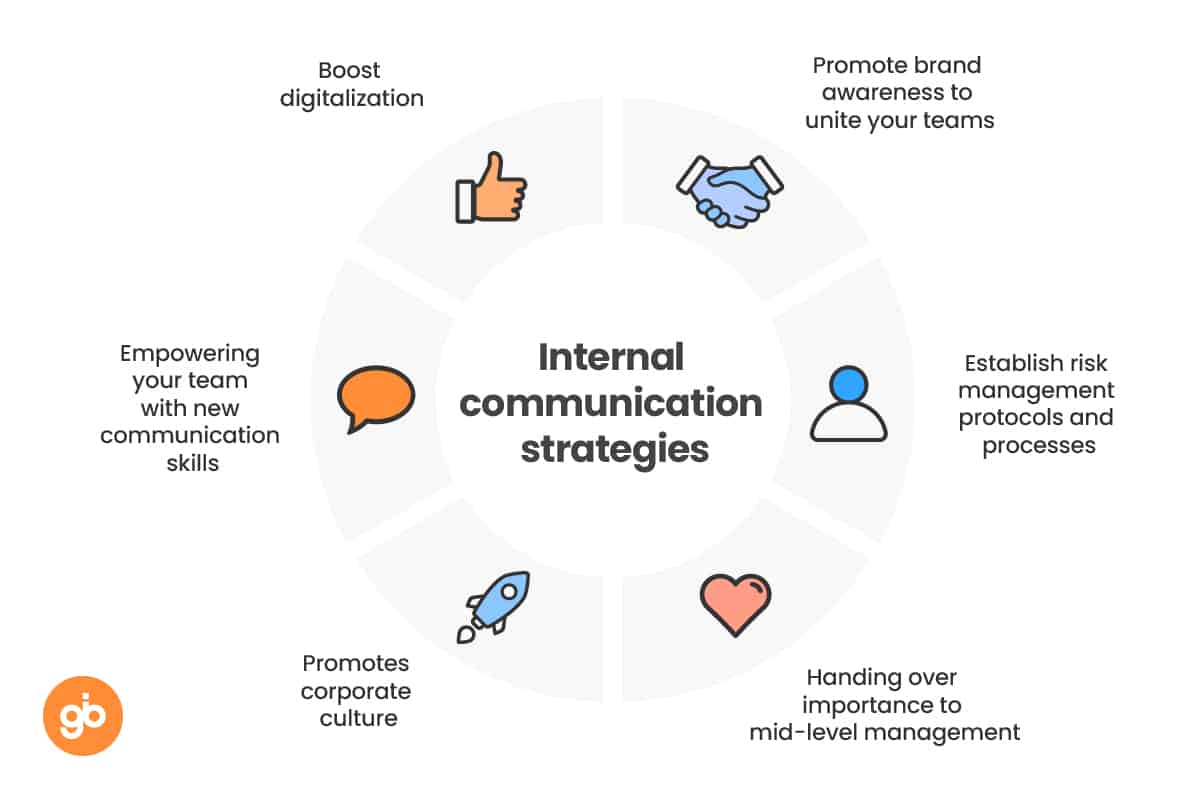The implementation of organizational change management is key for companies that need to adapt to the ever-changing market environment in order to remain competitive and relevant.
But for change to be effective, it requires careful planning, execution, and evaluation of each step.
That’s why, in this article, we’ll outline six key steps that will help ensure a successful transition in your company when implementing new workflows, policies, or procedures.
By following these simple guidelines, you will ensure that you get the best results and achieve the success of your goals.
What is organizational change management?
As organizations struggle to remain competitive and efficient, the need for change for the better is ever-present.
Implementing new processes or adjusting existing ones can help a team’s operations to perform to quality standards – from subtle modifications in workflows to significant revisions in company culture.
Organizational change management requires the adjustment of processes or operations in order to optimize the performance of a particular team or company.
How do employees influence organizational change management?
Suppose that, within a work team, the boss is removed from his position. In that scenario, employees may feel uncertain about their future employment.
The team may be concerned about whether there will be payroll changes that will affect them, what the new manager will be like, and how their leadership will impact the work.
This is a typical case where applying organizational change management is necessary and where we can see how employees play a key role in that process.
If employees are not receptive to change, they will be working on tasks and projects that are misaligned with business objectives. If they are not comfortable with the presence of a new boss, it will create discomfort that can negatively impact day-to-day performance. This causes organizations to lose hundreds of hours of productivity.
According to Gartner, improving employee receptiveness to change can increase productivity by 24% and profitability by 20%.
But this will only be possible if companies focus on removing those barriers between employees and change, such as:
- Overloaded work teams.
- Limited access to new resources.
- Rigid processes.
- Poor communication between managers and employees.
To return to the example, the company needs to talk directly with employees to inform them about the situation and the steps to be taken. The idea is to give them the certainty of what is to come, which will reduce their rejection of change.
This is why it is critical that team leaders have the necessary knowledge to act with determination and efficiency in the face of change.
How to implement effective change management in your company?

Now let’s take a closer look at each of them…
1- Identify the necessary changes
Performing transformation processes can be a less complicated task if you take as a first step an agile diagnosis within your team.
You can organize a meeting and invite each team member to express how he or she feels in the company, what is being done well, and what could be improved. This feedback allows you to understand how employees perceive the company’s performance.
Next, perform two key analyses:
- Analyze whether the information obtained from employee feedback can be aligned with the company’s vision, mission, and business objectives.
- Identify and reflect on the current decision-making processes of other team leaders.
Subsequently, unify both analyses, to obtain a systematic approach to the organization’s functioning. You will then be able to identify the necessary changes.
2- Estimate what the impact after the change will be
A step that the average team leader usually misses in organizational change management is the projection of the after-effects once the adjustments have been implemented.
So once you are clear about the changes you want to carry out, think about how it will affect the company at all levels of work. As well as the possible domino effect it may generate.
Here, you will need to consider:
- Which changes are vital?
- Which ones can be postponed?
- And which are not viable?
You can also ask yourself:
- Who will be most affected?
- How will the change be perceived?
- What will be the repercussions if they are implemented or not?
3- Assign leaders prepared for change
The best battles are led by the best leaders, and in this case, you are the statesman.
Use the support that other leaders can provide, especially if they already have experience with business changes.
Coordinate with others to strategically decide the best way to deal with the situation.
Make sure that the people chosen to lead are able to:
- Communicate: they must have the ability to convey messages properly and verify that they are understood.
- Organize: they need to delimit, establish goals, and determine the scope and levels of the strategies.
- Integrate: a leader must pay more attention to the human element, but needs to know how to integrate technical and material resources.
- Direct: make decisions according to the planned activities.
- Motivate: the leader must encourage others to act without the need to order them to do so, and for this he must know his team well.
4- Develop an internal communication strategy
You probably already have an established communication flow in your company. But if you want to improve your organizational change management, you need to evaluate how effective corporate communication has been up to that point.
This is important because, once the changes have been established, you must communicate the decision to the rest of the organization. You must let them know the steps to be taken and the activities that will be implemented in the near future.
So, to develop your internal communication strategy, we recommend that you take the following into account:

It is crucial that you understand that, without a good communication strategy, any other changes required will be difficult to implement.
In this sense, you can consider the improvement of internal communication strategies as a change in itself, and one of the most valuable changes you can make.
But if you feel you just need to optimize your current strategy, here are 6 tips to improve your company’s organizational communication.
5- Provide training to your employees
Organizational change management includes training. That is because some changes, such as restructuring products or adapting a new value proposition, require collective training so that everyone understands the new objectives and processes. By doing so, it ensures an aligned vision and discourse across all departments.
This is why we recommend that you ask yourself at this stage:
- What is the best teaching method?
- Who will deliver the training?
- What will be the most suitable schedule?
- What will be the duration of the training?
6- Rely on collaborative working tools
We can say that the three pillars of business change management are organization, collaboration, and communication:

But without a suitable work tool, it can be difficult to bring all this to fruition. For this reason, collaborative work software is essential, as it allows you to:
- Centralize all the information related to change.
- Have all the teams on a single platform to provide them with the necessary information.
- Send surveys to your employees to receive feedback.
- Improve productivity by automating processes and routine tasks. Allow them to focus on what’s important.
- Connect with internal and external partners easily.
Among many other advantages!
Conclusion
Performing organizational change management is a critical part of business success. But it can be challenging to implement without the right level of experience and planning.
However, it doesn’t have to be a daunting task: if you keep these 6 key steps in mind, you can execute a positive transformation process for long-term success.
From our experience, we stress the value of using collaborative tools. Such tools enable you to establish effective planning and communication with the team to achieve greater synergy.
So, if you need help with this issue, contact us to get your free advice 😊



